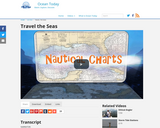
NOAA website showing how to use nautical charts.
- Subject:
- Career and Technical Education
- Maritime Science
- Material Type:
- Interactive
- Provider:
- National Oceanic and Atmospheric Administration
- Date Added:
- 11/02/2018

NOAA website showing how to use nautical charts.
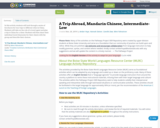
In this activity students will look through a series of brochures for tour trips to different cities in China. Students will take on the role of a travel agent and plan a trip to China for a client. Students will then share their individual travel itineraries for their clients with the group and describe their choices.
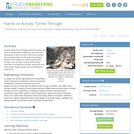
Students apply their knowledge about mountains and rocks to transportation engineering, with the task of developing a model mountain tunnel that simulates the principles behind real-life engineering design. Student teams design and create model tunnels through a clay mountain, working within design constraints and testing for success; the tunnels must meet specific design requirements and withstand a certain load.
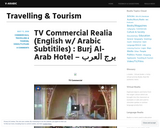
This subpage of Virtual Arabic blog offers realia (realia is real life material meant to be used to aid language study in classroom situations) material regarding travel, trips, tourism, and places. Specific topics include a video account of a trip to Morocco, an image displaying many license plates from the Arab world, and video guides of well-known Arab hotels. Many of the archived items are images, but there are also videos, ebooks, and guides.
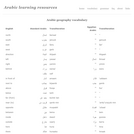
This list presents a basic set of vocabulary words that deal with categories of geography and places, including the names of cities and countries, as well as directional indicators. The list also contains verbs and nouns relevant to finding specific regions or countries on a map.
The majority of words contained within the website are nouns, and some verbs are interspersed. The words and verbs are presented in both modern standard and colloquial Egypt, and feature Arabic text and transliteration.
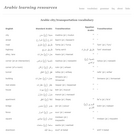
This list presents a basic set of vocabulary words that deal with categories of travel and places, including travel and tourism, as well as nouns and verbs relevant to urban spaces, such as roads and airports.
The majority of words contained within the website are nouns, and some verbs are interspersed. The words and verbs are presented in both modern standard and colloquial Egypt, and feature Arabic text and transliteration.
![WPA Posters: Federal Theatre [presents] "Goodbye Hollywood!" The Best of Friends Must Part!](https://img.oercommons.org/160x134/oercommons/media/upload/materials/screenshots/materials-course-96975.png)
Poster for Federal Theatre Project presentation of "Goodbye Hollywood" showing two men prepared for travel.
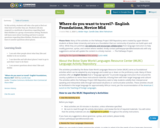
In this activity, students will take a fun quiz to find out what kind of traveller they are. Students will also respond to a multitude of questions regarding their likes/dislikes in a group conversation setting. Students will learn more about traveling and how to answer questions regarding likes/dislikes. Students will also learn to answer questions about places.

This semester, we will read writing about travel and place from Columbus’s Diario through the present. Travel writing has some special features that will shape both the content and the work for this subject: reflecting the point of view, narrative choices, and style of individuals, it also responds to the pressures of a real world only marginally under their control. Whether the traveler is a curious tourist, the leader of a national expedition, or a starving, half-naked survivor, the encounter with place shapes what travel writing can be. Accordingly, we will pay attention not only to narrative texts but to maps, objects, archives, and facts of various kinds.
Our materials are organized around three regions: North America, Africa and the Atlantic world, the Arctic and Antarctic. The historical scope of these readings will allow us to know something not only about the experiences and writing strategies of individual travelers, but about the progressive integration of these regions into global economic, political, and knowledge systems. Whether we are looking at the production of an Inuit film for global audiences, or the mapping of a route across the North American continent by water, these materials do more than simply record or narrate experiences and territories: they also participate in shaping the world and what it means to us.
Authors will include Olaudah Equiano, Caryl Philips, Claude Lévi-Strauss, Joseph Conrad, Jamaica Kincaid, William Least Heat Moon, Louise Erdrich, Álvar Núñez Cabeza de Vaca.
Expeditions will include those of Lewis and Clark (North America), Henry Morton Stanley (Africa), Ernest Shackleton and Robert F. Scott (Antarctica).
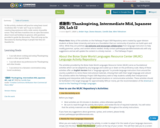
In this activity, students will practice using basic travel vocabulary like ‘to take’ and ‘to go on vacation’, constructing sentences with a wide variety of possible nouns. They will then transition into an open discussion about travel and holidays in general, with questions provided to guide the discussion. They will wrap up the discussion by sharing things or people that they are thankful for.
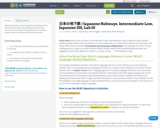
Students will learn about navigating and paying for the train system in Japan. They will then practice their travel vocab with a game that pushes their vocab and requires them to talk about that vocab creatively.

In this activity, students will have the opportunity to practice learning vocabulary words related to traveling and what they mean.Students will learn about transportation systems and vocabulary related to transportation through a game.
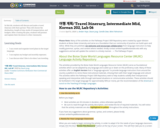
In this lab, students will discuss and make a travel itinerary with their partner. They will choose the destination, length of stay, mode of transportation, and budgets. After creating the plan, students will present and explain their decisions to other classmates.